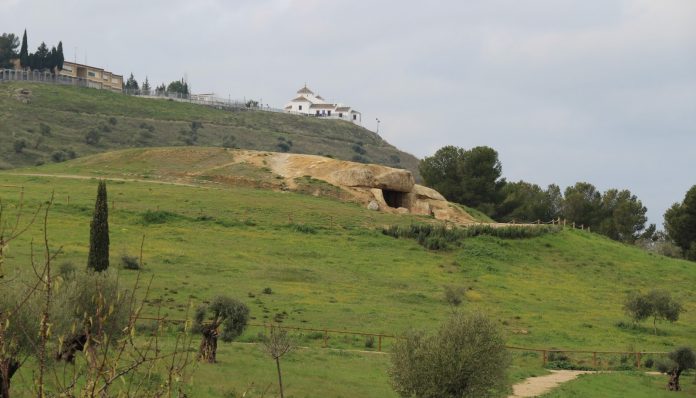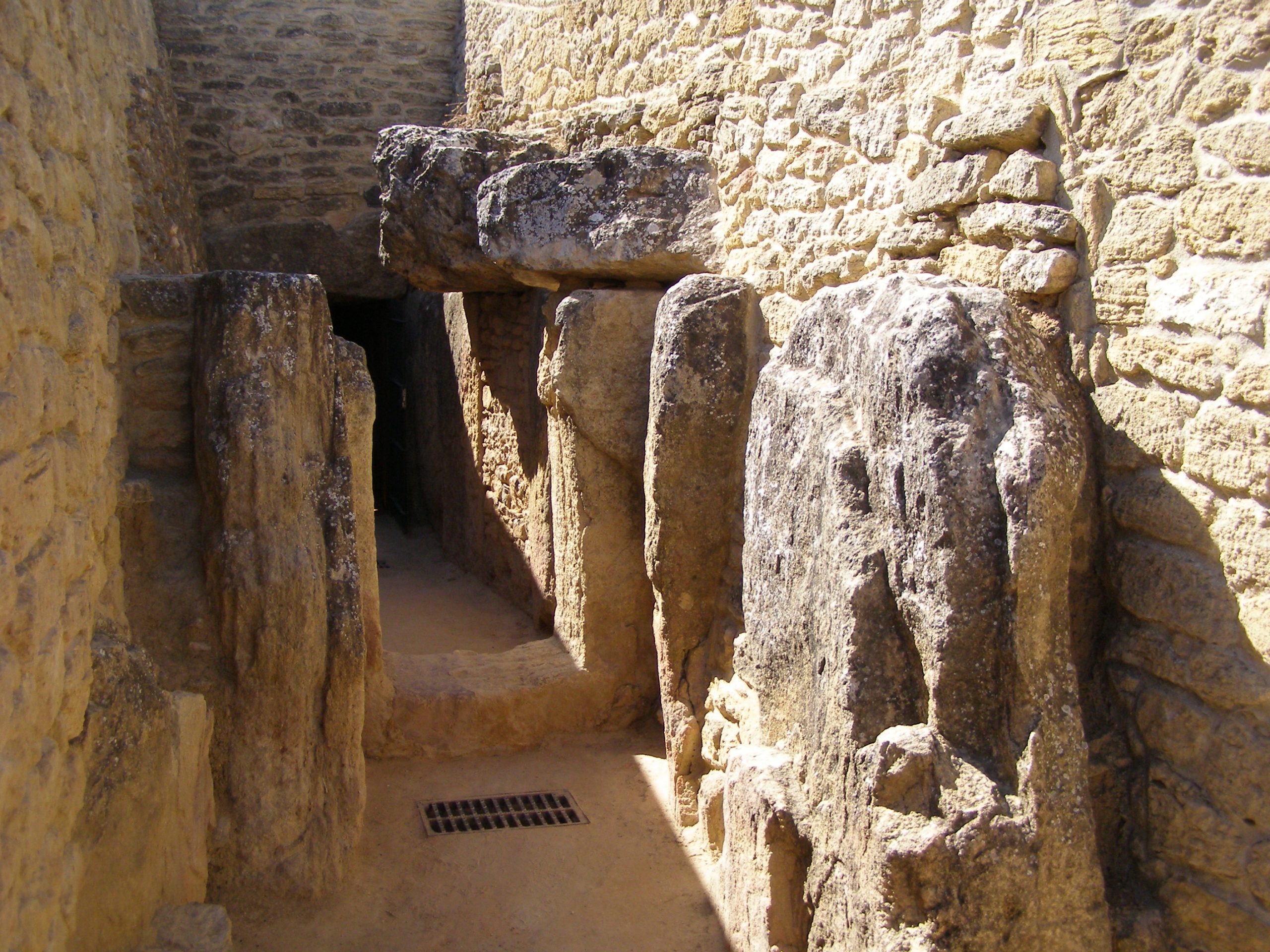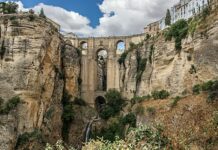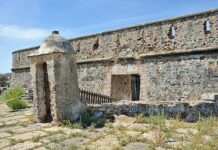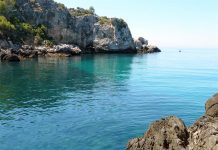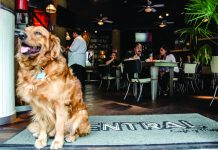The Archaeological Ensemble of the Dolmens of Antequera is a UNESCO World Heritage Site since 2016. Located in Antequera, Malaga.
This ensemble consists of five monuments, three cultural (Dolmen of Menga, Dolmen of Viera, and Tholos of El Romeral) and two natural (La Peña de Los Enamorados and El Torcal de Antequera).
One of the finest cultural ensembles in Europe!
The Dolmen of Menga was declared a National Monument in 1886, followed by the Dolmen of Viera in 1923. The Tholos of El Romeral has been part of the National Artistic Archaeological Treasure since 1926, and it was declared a Historic-Artistic Monument in 1931.
NOTE: What is a dolmen?
A dolmen is a megalithic construction with several vertical stones driven into the ground and one or more stones placed horizontally on top, acting as a roof.
History of the Dolmens of Antequera
Focusing on the cultural monuments, these constructions are over 6,500 years old, dating back to the Neolithic and Bronze Age periods, and represent the earliest forms of architecture in prehistory.
It has great value of the cultural dolmens lies mainly in their unique orientation, towards the surrounding nature rather than the sun, which was common during their construction:
The Dolmen of Menga is oriented towards La Peña de los Enamorados, the Tholos of El Romeral towards El Torcal de Antequera, and the Dolmen of Viera was the only one oriented towards the sun.
Dolmen Site of Antequera
The Dolmen Site of Antequera was declared a UNESCO World Heritage Site in 2016, recognizing its exceptional value and historical significance. This site includes three main dolmens: Menga, Viera, and El Romeral, along with their surrounding areas.
Dolmen of Menga
The Dolmen of Menga, with its 6,000 years of age, is an impressive gallery-shaped burial chamber distinguished by its 10 giant access slabs, five on each side, making it the most spectacular of the three dolmens.
This masterpiece, constructed with orthostats and roofing slabs, stands out for its enormous dimensions, making it unique in its style.
A notable feature of the Dolmen of Menga is its unusual orientation. Unlike most Mediterranean dolmens, which are aligned with the sunrise, this dolmen is oriented towards La Peña de los Enamorados, specifically towards the Matacabras shelter, where rock paintings have been discovered.
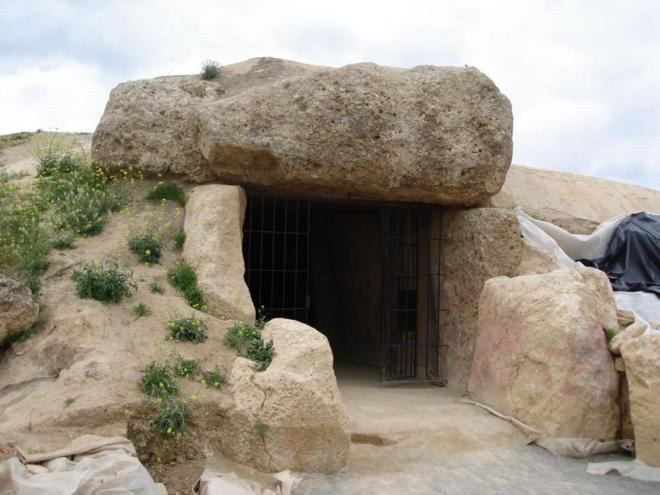

Dolmen of Viera
The Dolmen of Viera, also known as the Cave of the Viera Brothers or the Small Cave, is another impressive dolmen in the Antequera ensemble. Although smaller in size, it remains striking with a circular-shaped funerary chamber.
This dolmen ranks second in size among the Dolmens of Antequera and dates back to a period between 3510 and 3020 a.C.
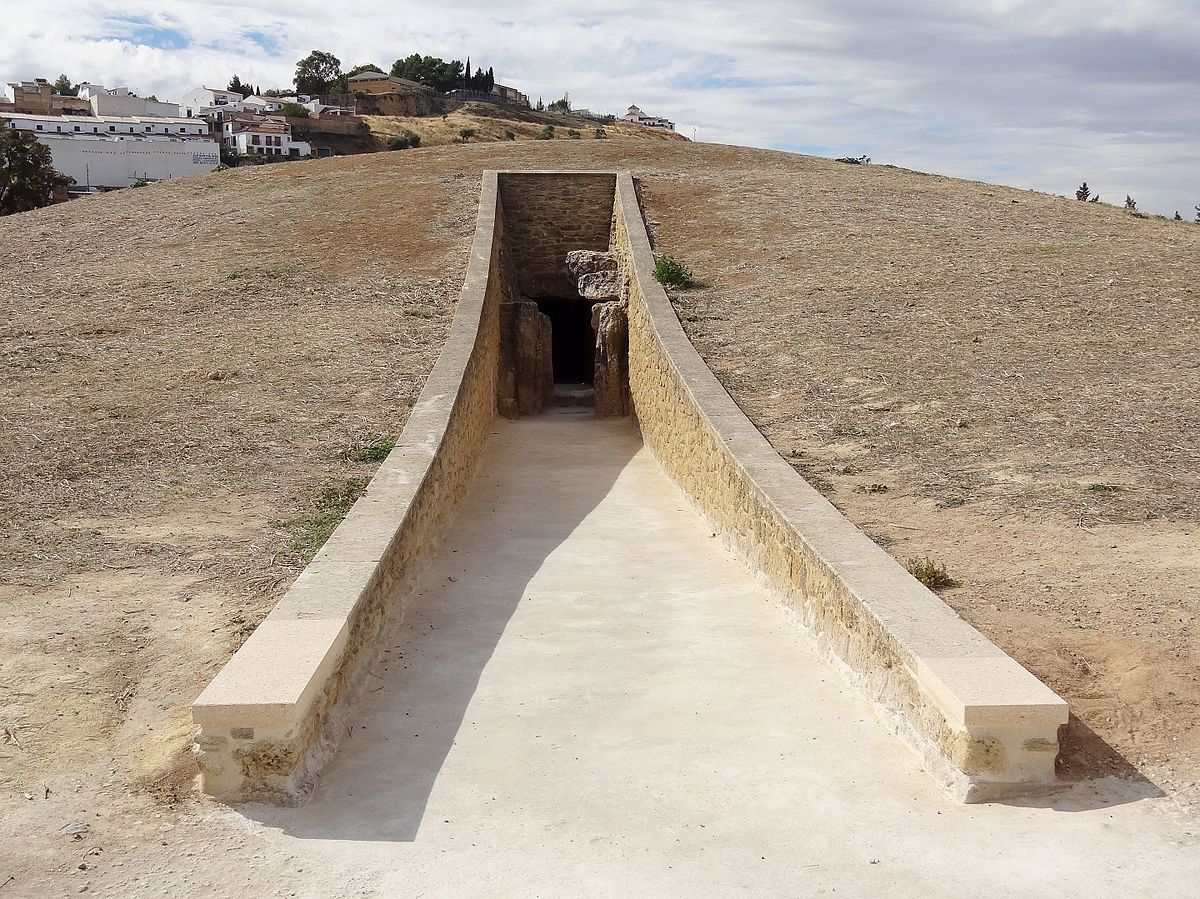
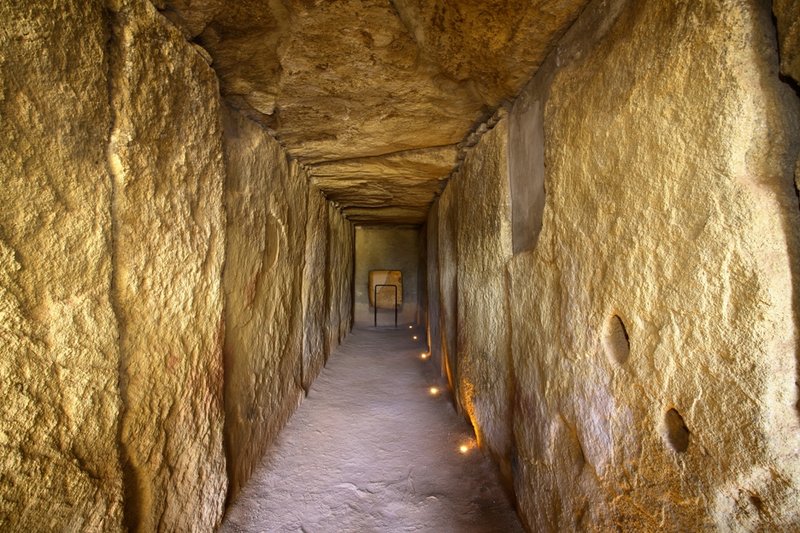
Dolmen of El Romeral
The Dolmen of El Romeral, although less known, is a remarkable structure in the ensemble of dolmens in Antequera. It stands out for its polygonal funerary chamber and a unique entrance that provides access to the interior. This dolmen shows an evolution in the architectural design of megalithic monuments in the region.
Also known as Tholo El Romeral, it is the most modern dolmen of the three, built between 3000 and 2200 BC. The design of its dome makes it unique, with a noticeable proximity between the rows of orthostats and roofing slabs that form its walls.
The Tholo of El Romeral is located on the Mega-La Peña axis and, like the dolmen of Menga, it exhibits an anomalous orientation. In this case, it is oriented towards the Sierra de El Torcal, where the Cave of El Toro is located, and the midday sun during the winter solstice.
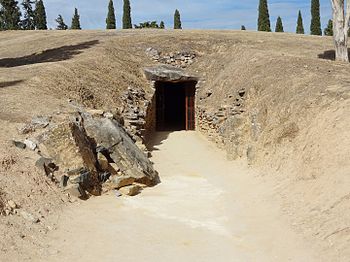
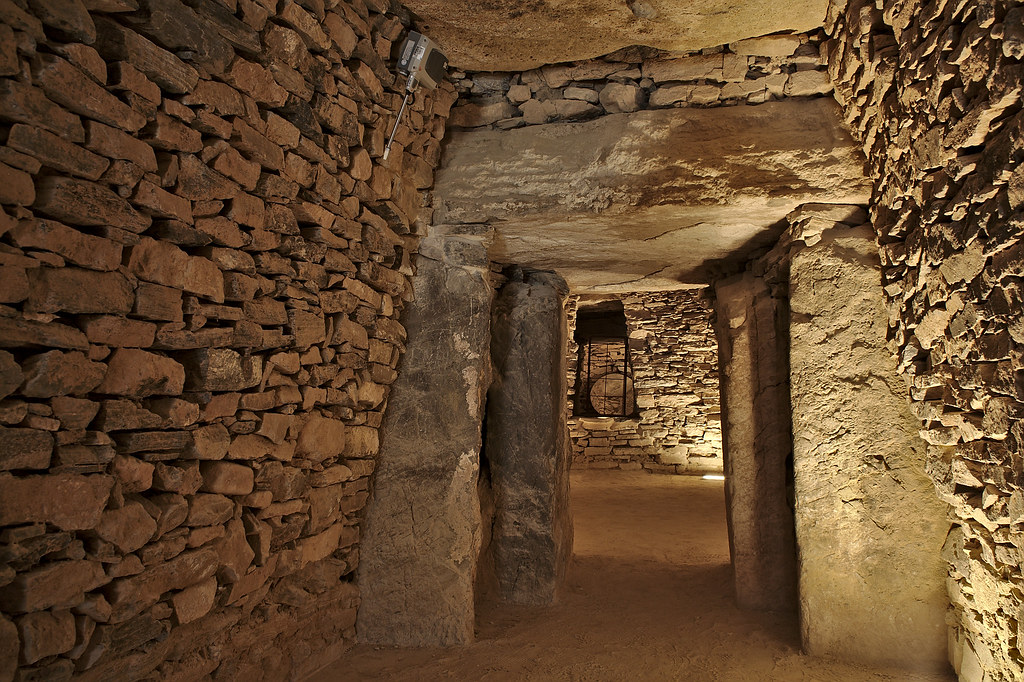
Do not hesitate to take a stroll through Antequera and discover these natural wonders.
Guided tours are available if you are interested. More information here.
Opening hours of the Dolmens of Antequera:
From January 1st to March 31st and from September 16th to December 31st: Tuesday to Saturday from 09:00 to 18:00. Sunday, holidays, and the day before a holiday: from 09:00 to 15:00. Monday (non-holiday): closed.
From April 1st to June 15th: Tuesday to Saturday from 09:00 to 20:00. Sunday, holidays, and the day before a holiday: from 09:00 to 15:00. Monday (non-holiday): closed.
From June 16th to September 15th: Tuesday to Sunday, holidays, and the day before a holiday: from 09:00 to 15:00. Monday (non-holiday): closed. They are open on all holidays except January 1st and 6th, May 1st, and December 24th, 25th, and 31st.
Price: Free
Access to the Archaeological Ensemble of the Antequera Dolmens ends thirty minutes before closing time. Entry with the free guided tour service must be arranged in advance, preferably by phone or email.
How to get to the Antequera Dolmens?
The Menga and Viera Dolmens are located within a short distance of about 50 meters from each other, while the El Romeral Tholos is about 4 km away.

